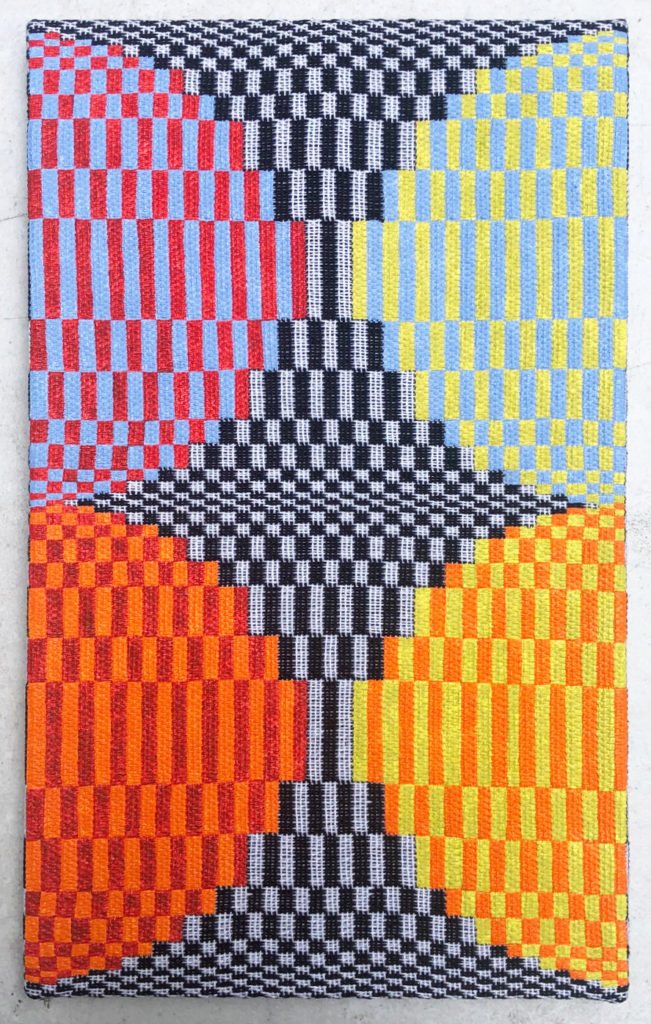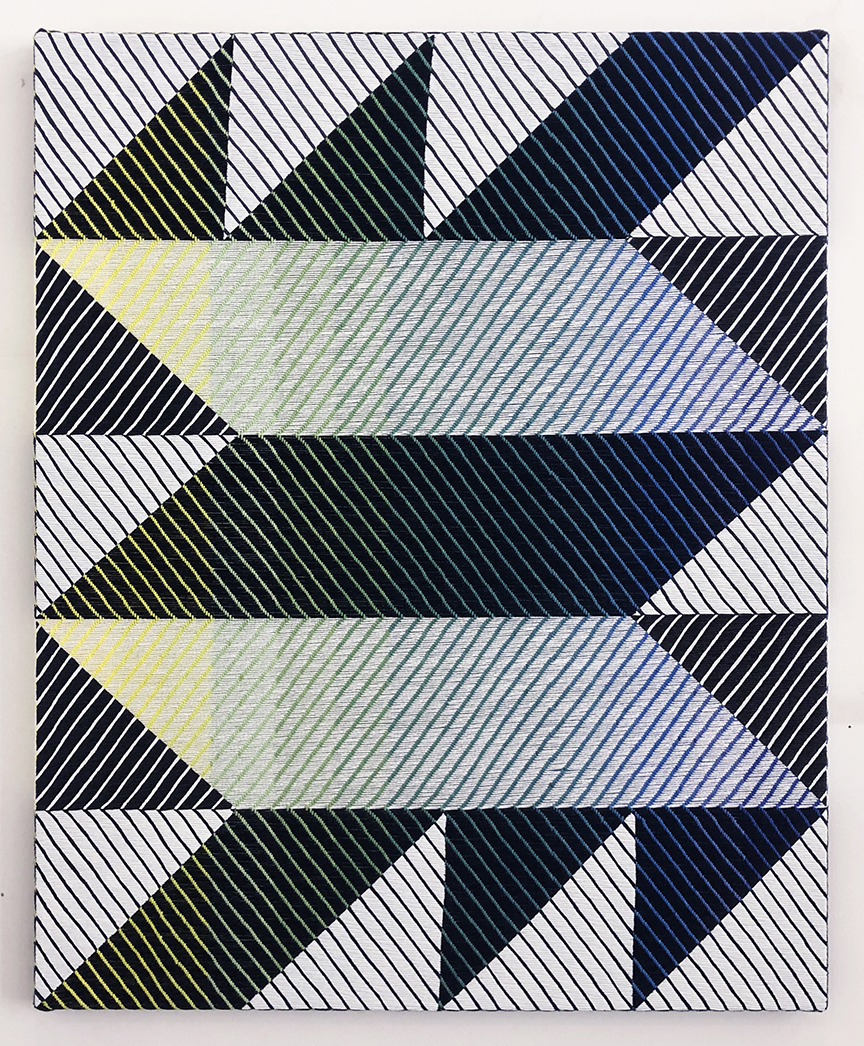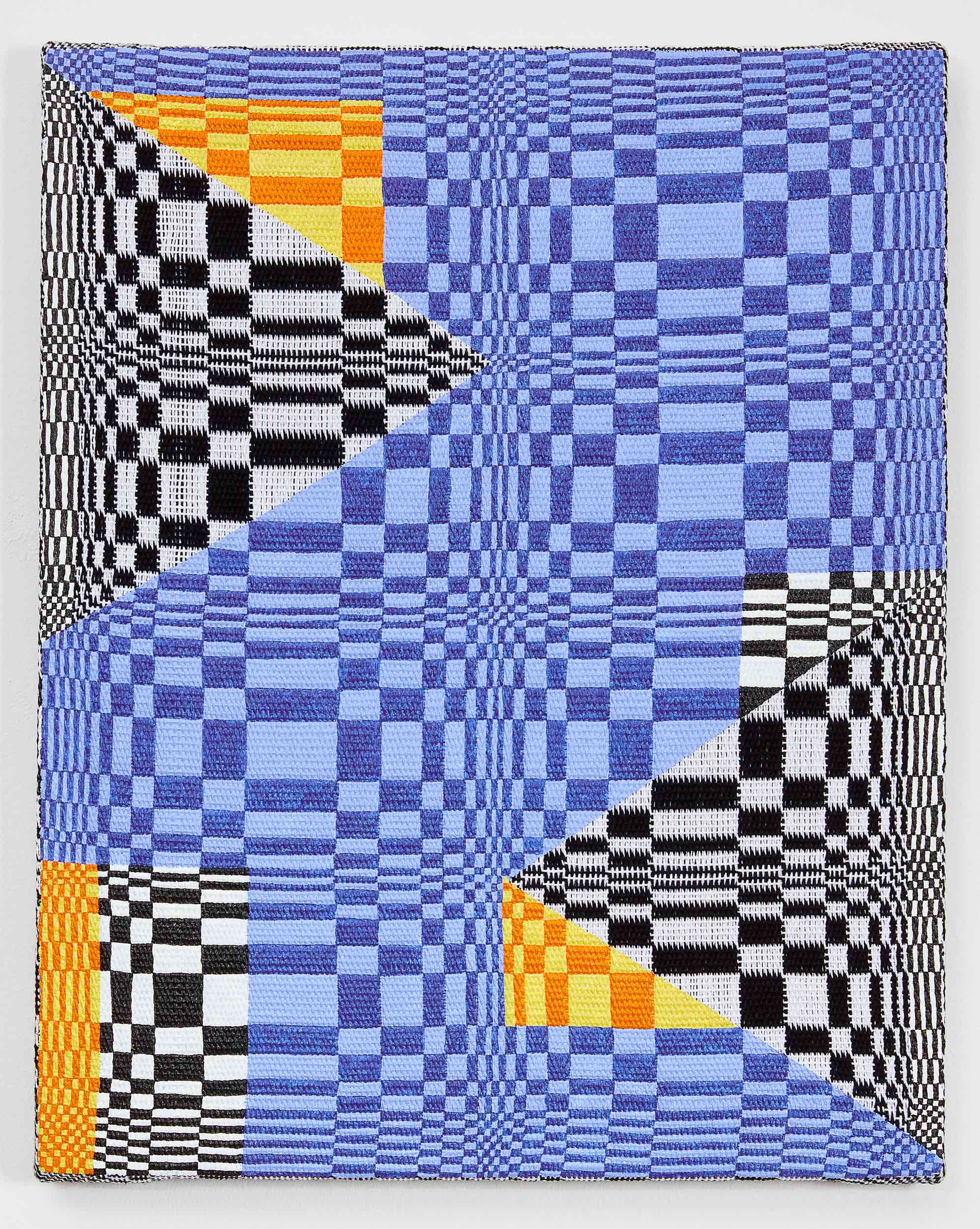
Most painters are more concerned with the surface of their work—such as the oils and acrylics that they apply to a canvas or the composition structure—than with what lies beneath, the canvas itself. But artist Samantha Bittman seeks to put the substrate front and center. She began questioning the materials that constitute a painting when she was a graduate student in Chicago, and wanted to “flip the relationship between the painting support and the painting itself.” Her desire for more tactility in her work led her to add weaving to her practice—she recently founded the Catskill Weaving School near her home in Woodstock, New York—and to create colorful, patterned paintings atop her handwoven textile designs. “I am trying to complicate the boxed categories with which we see things,” she says, “so to make something that is a painting, but it’s also a weaving, and vice versa.”
After she’s finished a weaving on the loom, Bittman ties her weaves to stretchers—much like a conventional canvas—and lets the fibers guide her composition. Splashes of neon mingle with monochromatic zig-zags in a dizzying psychedelic trance. “Sometimes I will approach the color choices in terms of high-contrast or low-contrast color relationships when I want to dial up or down the optical effects,” she says, “and sometimes I will dye my own yarn when I want a prismatic gradation of hues.” Bittman wants the viewer to examine the fibers and patterning because these elements are, well, interesting. The goal, she says, is “to make something new for myself to look at, and then that’s what I want for the viewer as well, to share this new thing with them that they don’t have an understanding of yet.”



